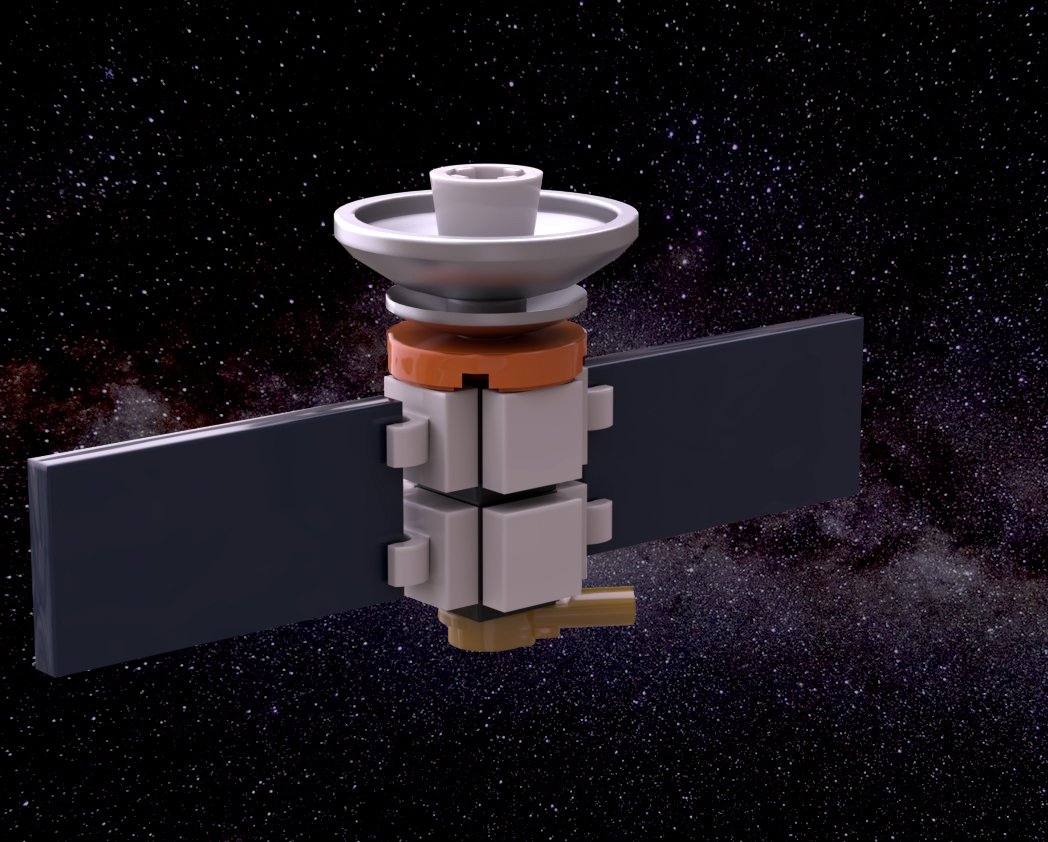
LEGO Designer:
Dan Fallon (phreaddee)
Designed:
March 2022
Categories:
All, Earth Orbit Telescopes, Probes and Satellites, Space Agency - NASA
Launch Vehicle Details
Stages:
Length:
Diameter:
Mass at Launch:
Low Earth Orbit Capacity:
Total Thrust:
Apogee:
Class:
The COBE satellite was developed by NASA’s Goddard Space Flight Center to measure the diffuse infrared and microwave radiation from the early universe to the limits set by our astrophysical environment. It was launched November 18, 1989 and carried three instruments, a Diffuse Infrared Background Experiment (DIRBE) to search for the cosmic infrared background radiation, a Differential Microwave Radiometer (DMR) to map the cosmic radiation sensitively, and a Far Infrared Absolute Spectrophotometer (FIRAS) to compare the spectrum of the cosmic microwave background radiation with a precise blackbody. Each COBE instrument yielded a major cosmological discovery:
DIRBE – Infrared absolute sky brightness maps in the wavelength range 1.25 to 240 microns were obtained to carry out a search for the cosmic infrared background (CIB). The CIB was originally detected in the two longest DIRBE wavelength bands, 140 and 240 microns, and in the short-wavelength end of the FIRAS spectrum. Subsequent analyses have yielded detections of the CIB in the near-infrared DIRBE sky maps. The CIB represents a “core sample” of the Universe; it contains the cumulative emissions of stars and galaxies dating back to the epoch when these objects first began to form. The COBE CIB measurements constrain models of the cosmological history of star formation and the buildup over time of dust and elements heavier than hydrogen, including those of which living organisms are composed. Dust has played an important role in star formation throughout much of cosmic history.
DMR – The CMB was found to have intrinsic “anisotropy” for the first time, at a level of a part in 100,000. These tiny variations in the intensity of the CMB over the sky show how matter and energy was distributed when the Universe was still very young. Later, through a process still poorly understood, the early structures seen by DMR developed into galaxies, galaxy clusters, and the large scale structure that we see in the Universe today.
FIRAS – The cosmic microwave background (CMB) spectrum is that of a nearly perfect blackbody with a temperature of 2.725 +/- 0.002 K. This observation matches the predictions of the hot Big Bang theory extraordinarily well, and indicates that nearly all of the radiant energy of the Universe was released within the first year after the Big Bang.
Part count: 17 bricks, 9 lots.
| Unit | width | length | height |
|---|---|---|---|
| Studs | 3 | 10.3 | 4.8 |
| Inches | 0.9 | 3.2 | 1.5 |
| Centimetres | 2.4 | 8.2 | 3.8 |
No external URL provided.
Launch History information from space.skyrocket.de
Launch History information from space.skyrocket.de
Related Posts
None found











![4740 Dish 2 x 2 Inverted [Radar]
in Metallic Silver
Plates Round Curved and Dishes](https://cdn.rebrickable.com/media/thumbs/parts/elements/6178683.jpg/85x85p.jpg?1658327178.6199646)
![4740 Dish 2 x 2 Inverted [Radar]
in Metallic Silver
Plates Round Curved and Dishes](https://rebrickable.com/static/img/overlays/ov_2.png?1692235612.5594056)
![43898 Dish 3 x 3 Inverted [Radar]
in Metallic Silver
Plates Round Curved and Dishes](https://cdn.rebrickable.com/media/thumbs/parts/elements/4296514.jpg/85x85p.jpg?1658327060.8479471)
![43898 Dish 3 x 3 Inverted [Radar]
in Metallic Silver
Plates Round Curved and Dishes](https://rebrickable.com/static/img/overlays/ov_3.png?1692235612.5594056)